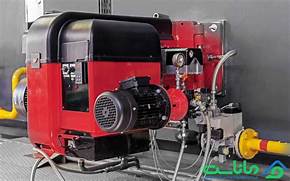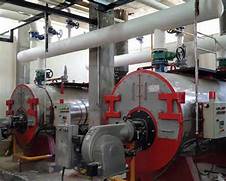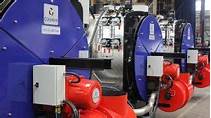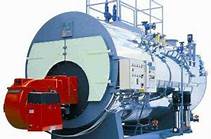Engine room boiler In East of Tehran ( Sale, Services )
You can introduce your business services or products in this section.
For this purpose, be in touch with us.
As mentioned earlier, any type of waste, such as soot or sediment, that covers the boiler heat transfer surface will reduce efficiency and increase the likelihood of parts and equipment failure. Cleaning of this surface is necessary according to the manufacturer&#;s recommendations for the life of the equipment and to maintain the optimal performance of the boiler. The waste that covers the boiler pipes prevents heat transfer and raises the temperature of the aerator gas. If incomplete combustion occurs, the resulting soot will accumulate in the part of the pipe where combustion has taken place. Similarly, inadequate water treatment in the water sections of the pipes causes sediment to accumulate in these sections. Only a .-inch-thick layer of soot or sediment can reduce heat transfer by up to . percent, and a .-inch-thick layer by percent.
Engine room boilers are high-pressure tanks designed to heat water or generate steam that can be used to heat the environment or to heat the building consuming hot water. In the heating of most commercial complexes, the source of heat for the engine room boiler are burners that work by burning natural gas. Diesel burners or fuel oil (rarely) can also be used. In some heating installations, the use of steam is preferred. Such as: absorption cooling systems, kitchens, laundries, disinfectants and steam-powered equipment.
Figure shows the combustion efficiency chart for natural gas fuel with electricity, which shows the relationship between excess air and flue gas temperature with combustion efficiency. For example, by following the Step line in the diagram, the amount of oxygen at % in the flue gas (as shown in the diagram equals approximately % of the excess air) and ° F as the flue gas temperature rises, the corresponding combustion efficiency is about . % is observed. At the same increase in the flue gas temperature by degrees Fahrenheit, the Step line shows that reducing the oxygen in the flue gas to % increases the combustion efficiency to about .%. The lower the percentage of oxygen in the flue gas, the less heat is transferred to the excess oxygen, resulting in increased fuel efficiency. The higher the efficiency, the more heat will be transferred to the inlet water instead of to the flue gas, thus reducing the flue gas temperature.
Proper water hardening operations are essential to maintain the boiler operating properly. Each water hardening operation must be specifically planned and designed based on the minerals not dissolved in the compensating water, the percentage of distillation return, and the percentage of aeration. Insoluble solids in boiler water and water hardness in small and low-pressure motorhomes should be tested daily and in large and high-pressure motorhomes on an hourly basis. An annual inspection of boilers should include a thorough inspection and testing for signs of fouling or corrosion on surfaces adjacent to the water. The presence of even a thin layer of sediment prevents heat transfer and thereby reduces combustion efficiency. .
The burner combines fuel and oxygen to create combustion conditions with the help of a combustion device. This combustion takes place in a combustion chamber and the heat generated is transferred to the heat exchanger water. The controls regulate the combustion process, the ignition rate of the burner, the required fuel, the amount of air required, the water temperature, the steam pressure and the pressure of the engine boilers.




